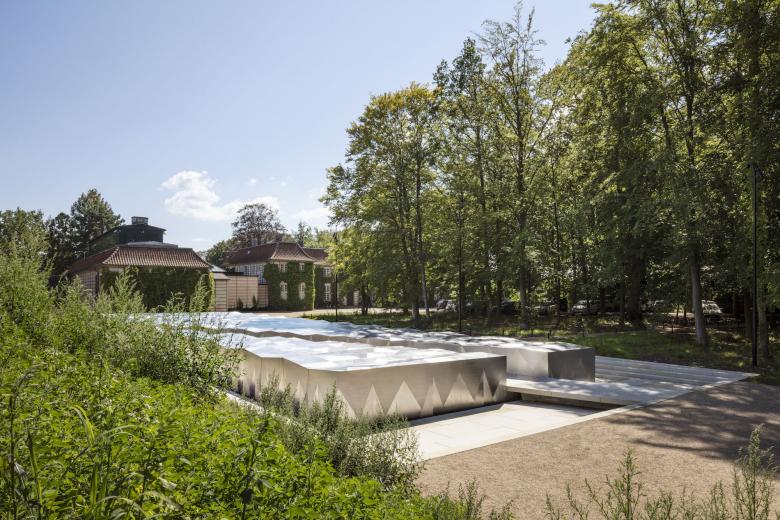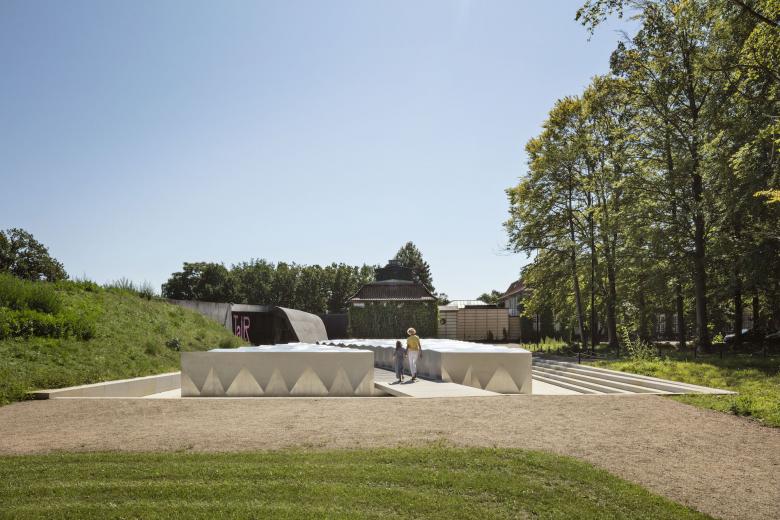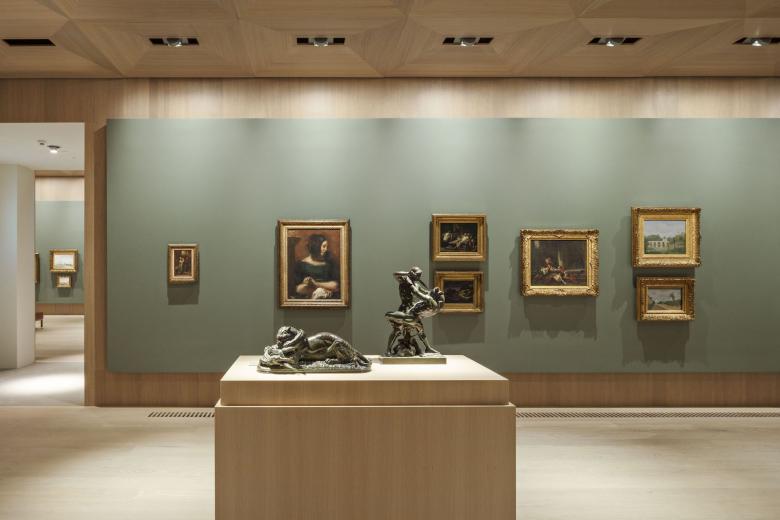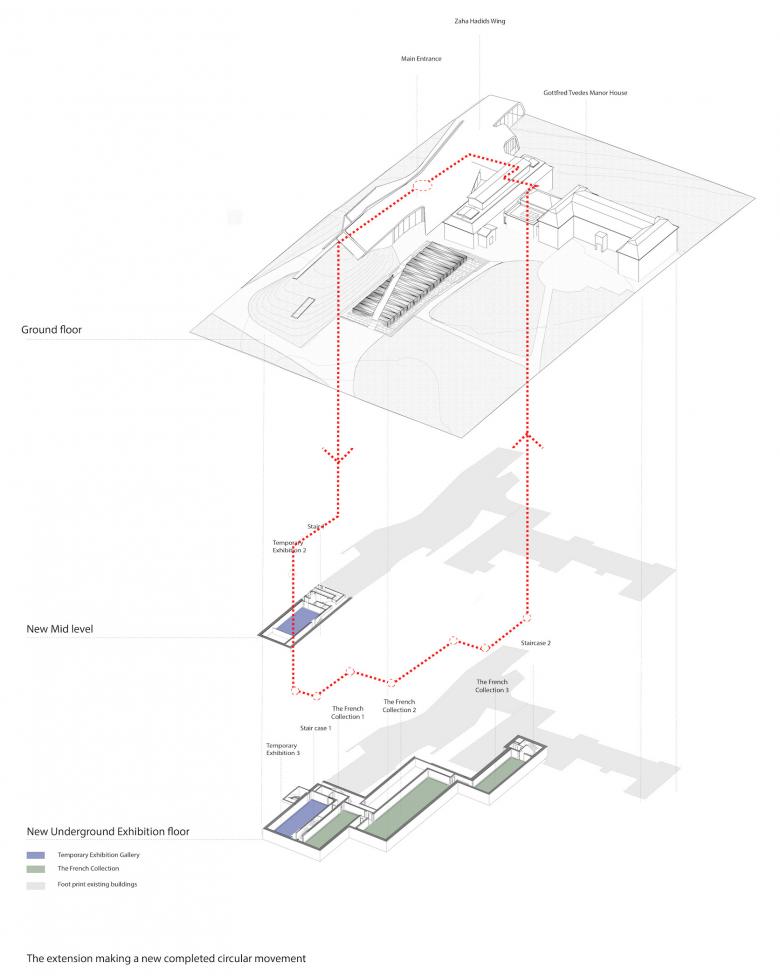A Buried Treasure Chest
In August 2014, the Ordrupgaard Museum reopened with a new primarily underground extension designed by Norway's Snøhetta. Ulf Meyer visited Ordrupgaard recently, sending us his impressions of the newly expanded museum.
The Louisiana Museum of Modern Art is a tough act to follow. While the private art museum in Humlebæk, just north of Copenhagen, draws visitors from around the world, the Ordrupgaard Museum in nearby Charlottenlund, is much lesser known. But this does not suggest it is not first class.
The original manor house was recently extended by Oslo’s Snøhetta, giving the finest collection of French art in Northern Europe an elegant new frame. Snøhetta’s building is buried underground so as not to obstruct the main elevation of the original building, which is flanked on one side by the first extension that Zaha Hadid designed in 2005.
Situated in a large park-like garden, the three-winged neoclassical mansion designed by Gotfred Tvede in 1918 features a gallery building that insurance magnate Wilhelm Hansen had built for the art collection he started to put together in the 1850s. His widow later gave the collection as a gift to the Danish state, which opened the museum in 1953. It is now under the proprietorship of the Danish Palaces and Culture Agency. Ordrupgaard’s collection of works by Monet, Degas, Renoir, Cézanne, Gauguin, and Matisse are on display in its entirety for the first time thanks to the DKK 131million ($20 million USD) extension.
As with Hadid, the client went for a big international name in contemporary architecture, but this time they hardly got anything visible above ground, only a glistening steel roof in clear-cut geometric shapes. The humble gesture of building into the terrain, still leads to exquisite new art spaces. Visitors reach the main entrance through a diagonal cut in the roof, then they take a long stair to three new underground galleries.
Contrasting with the black lava concrete of Hadid’s facades and the reflective steel of its own extension, Snøhetta’s galleries are gentle and old-fashioned. Floors and ceilings are covered with oak while dark-green walls form the backdrop for the paintings. The new building also improves circulation: while Hadid designed what was in essence a cul-de-sac, Snohetta extends the string, creating a loop that connects back to the main building.
Two of five subterranean exhibition spaces create a continuation of Hadid’s exhibition spaces and are used for traveling exhibits. The continuous movement through the three main halls for the permanent collection in long, parallel, rectangular halls that are slightly offset. The steel roof only marks the outline of the central gallery. Its facets refract the light, but no daylight is admitted into the gallery below, where spot lighting enables enjoying a series of delicate pastels by Impressionist masters. Slightly less subdued is the lighting for the painting halls.
Altogether, the building doubles the exhibition space and is an elegant, if conservative addition to one of Denmark’s finest art museums. Being underground is never ideal for art and its connoisseurs, so the contemporary art displayed above in the open park landscape laid out by garden architect Valdemar Hansen is a nice counter-balance to the art below.




